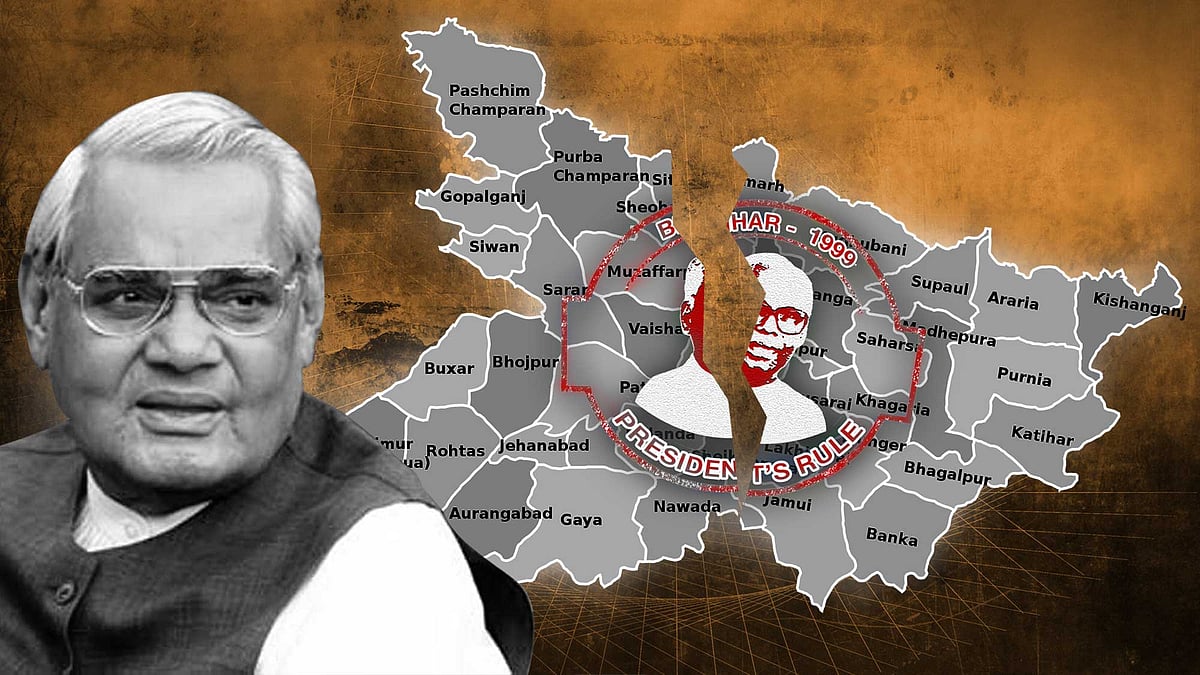
Prez Rule: Modi Should’ve Learnt From Atalji’s 1999 Bihar Faux Pas
BJP has done the same thing it has accused it’s opponents of, when it was in power, writes Neena Choudhary.

advertisement
The Bharatiya Janata Party, when in opposition, has stoutly resisted any attempt to impose President’s rule, and destabilise an elected government. But once in power, the party has done the same thing it has accused its opponents of.
The imposition of President’s rule in Arunachal Pradesh is a case in point. Apparently no sarkari mandarins pointed it out to Prime Minister Narendra Modi that any attempt at bringing the state under President’s rule would meet with the same fate as the Vajpayee-led NDA government’s decision in Bihar in 1999.
Vajpayee’s Bihar Conundrum
Nearly 17 years ago, or to be more precise in February 1999, the NDA government headed by Atal Bihari Vajpayee dismissed the 18-month-old Rabri Devi government on charges of failing to maintain law and order in Bihar. The immediate provocation for putting the state under President’s rule was the killing of 12 dalits, allegedly by the Ranveer Sena, a private army of upper caste landlords in Jehanabad district.
The Union Cabinet meeting, which was chaired by the then Home Minister LK Advani, (in the absence of Prime Minister Atal Bihari Vajpayee, who was then attending the G-15 summit in Jamaica) decided to impose President’ rule in Bihar. President KR Narayanan, a stickler for rules, who was then out of Delhi and attending a function in West Bengal, sought to know why a duly-elected government was dismissed with such urgency and the state put under Central rule. It was then that the Governor of Bihar Sunder Singh Bhandari, a known RSS leader, recommended that in the aftermath of the said incident, the Rabri Devi government should be summarily dismissed as it had miserably failed to maintain law and order in the state.
Why President’s Rule Was a Bad Move
- In 1999 the Vajpayee-led NDA government imposed President’s rule in Bihar.
- The 18-month-old Rabri Devi government was charged with failing to maintain law and order in the state.
- Nitish Kumar and George Fernandes, then belonging to the Samata Party, are said to have pushed for the decision.
- Then President KR Narayanan reportedly signed the order with reluctance.
- The NDA, which did not have much presence in the Rajya Sabha, was heavily criticised.
- The decision to enforce President’s Rule was revoked three weeks after it was imposed.
The Masterminds: George Fernandes and Nitish Kumar
Based on Bhandari’s report, the Union Cabinet, again chaired by Advani, met for the second time and decided that the Bihar Assembly be put under suspended animation after imposing President’s Rule in Bihar. It was believed that the two important Cabinet Ministers from Bihar – George Fernandes and Nitish Kumar – in Vajpayee’s regime, played an instrumental role in making the Union Cabinet arrive at such a decision. Both Fernandes and Nitish, then in the Samata Party, a key alliance partner of the BJP and an integral part of the NDA, were staunch rivals of Lalu Prasad and Rabri Devi, and were on the lookout for an opportunity to dismiss the RJD regime.
The Cabinet recommendation was made known to Vajpayee and the files moved to the President (who was then in Kolkata) for his assent. Narayanan reportedly signed the proclamation reluctantly. However, the ‘misadventure’ of the government was met with strong protests, both in and outside the Parliament.
No Lessons Learnt
The NDA government, which did not have a majority in the Rajya Sabha, soon realised its folly that the decision could not be ratified in the Upper House. As one Opposition party after another cried foul and termed the decision as an attempt to ‘throttle the democracy’, Vajpayee decided that enough was enough. Within three weeks, the Prime Minister advised LK Advani to announce on the floor of the House that the decision to impose President’s rule in Bihar was being revoked.
Rabri Devi was reinstated as Chief Minister in March 1999. Bhandari, who just simply followed his mentor’s advice, was ousted from the gubernatorial post. One hopes the present NDA regime takes a lesson from this incident, and avoids any further embarrassment, much like the previous one, as it lacks a majority in the Rajya Sabha too.
(The writer is a Bihar-based journalist)
- Access to all paywalled content on site
- Ad-free experience across The Quint
- Early previews of our Special Projects
Published: 27 Jan 2016,04:53 AM IST